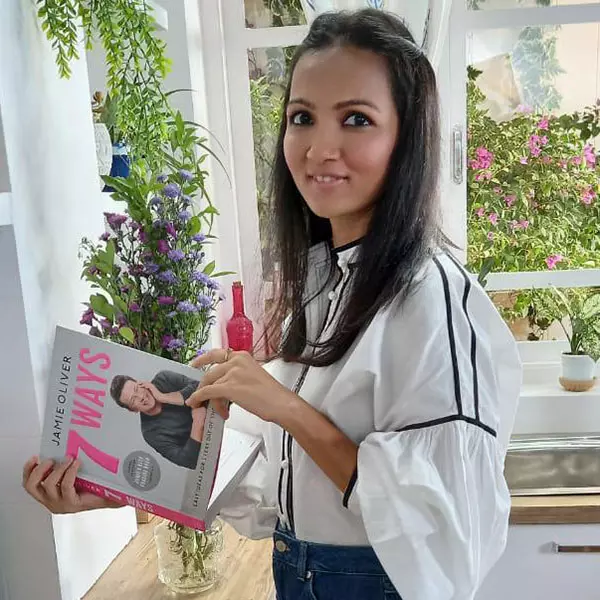Telugu actor turned restaurateur Dr Bharath Reddy on why he dedicated his life to millets
The millet king and cardiologist wants to tell you that these ancient ingredients are here to stay
- By Sonal VedLoading...
- | 8 Aug 2021 10:35 AM IST
 X
X
Over plates of wild rice and quinoa at dinner parties, I realised that everyone is suddenly talking about millets. Including the multi-talented Dr Bharath Reddy who seems to have been invested in these gluten-free nutritional powerhouses just as much, if not more. The cardiologist, Telugu film actor and now restaurateur started Millet Marvels in August 2020 with the aim of creating awareness around intelligent food choices, which makes sense given that he is a doctor first.
Reddy caught our attention when we learned about his first branch at Film Nagar in Hyderabad, which has grown ever since into several outposts across the southern city. From chicken pakoras and biryani to dosa, idli and vada, at Reddy's drive-through chain, you'll find several offerings on its sundry menu; each of them championing one millet or the other. We sat down with him to learn about the genesis of Millet Marvels and the story behind this unique venture.
Edited excerpts from an interview
What made you start a restaurant chain that focuses entirely on millets?
Millets have been known to the subcontinent for the past 7000 years, and they have always been a part of our ancestors' diets. One of the reasons I started Millet Marvels was because I wanted to see if I could impact change. I want to contribute towards building a healthier India, especially because I work at a hospital, where I would like to see the footfalls drop.
If millets have been an intrinsic part of Indian cuisine, what led to their erosion and how do you see yourself reversing this?
A prime reason behind the disappearance of millets from our diets is the Green Revolution, which began in India in the 1960s. It changed the way we eat greatly [as it encouraged farmers to focus more on High Yielding Varieties of seeds and disrupt agricultural practices with technology, which in turn, led to the erosion of our natural eating habits]. And I think, the only way to resuscitate them is to reinvent and present them in a more appealing manner. The cloud kitchen model at Millet Marvels allows for our brand ethos to spread rapidly through kiosks and drive-throughs, making it possible for more people to try familiar dishes—be it traditional South Indian food, or cuisines from the north—made with millets.
The UN has declared 2023 as the Year of the Millet and it's lately been all anyone can talk about. Do you think that the younger generation might be more receptive to millets than the last one?
If there is a way for the next generations to live a healthier life than the one before them, I am all for it and if that means declaring a year after a food group, so be it. As for the younger generation being more receptive to millets, I feel that even before we start talking to them about its benefits and such, it's important to explain to them that much of their eating habits and lifestyles, in general, are off track. The idea is to not threaten them, but rather open their eyes to the reality of our health crisis, which I am witnessing everyday at the hospital. It is important to rectify the way many of us are eating and living; so many young individuals today aren't quite aware about what they're putting into their bodies—it's necessary for them to ask these questions: is my rice and wheat processed? Are the grains I am consuming polished or unpolished? What are the nutritional benefits of the food that I am consuming?
What made you venture out into the restaurant space?
My actual intention wasn't ever to get into the food business. I started Millet Marvels more as a social cause and an initiative, rather than a restaurant and the aim is to change the way that we eat. In that sense, I would say that we're different from other restaurants and food ventures, because we are trying to, in a way, champion a social cause.
What does a daily meal look like for you and does that change when you're at a shoot, for instance?
My day typically begins with rolled-out muesli. And for lunch and dinner, you'd find me eating dishes made with millets. I make it a point to stick to this irrespective of whether I am at home or at a shoot.
An actor, doctor and now a restaurateur—how do these roles come together in your life?
I hail from a family of farmers, but my mother always dreamed of me becoming a doctor. Once I accomplished that, I wanted to go after my childhood wish of becoming an actor and the restaurant grew out of my concern for the things I learned during my work as a cardiologist. I guess all that matters, in the end, is that all three have been born out of passion, love and interest.
Which millet do you gravitate towards and why?
Each millet is special in its own way. Of all of them, my favourite has always been the little millet because it blends in with a lot of traditional South Indian staples, and that's a cuisine I enjoy the most.

Sonal Ved
Editor
Sonal Ved is the editor at IFN. She is also an author of an award-winning cookbook called Tiffin. She travelled through the first five tastes to be able to tell between a brie and provolone dolce. She can make stellar undhiyu and a green smoothie.


